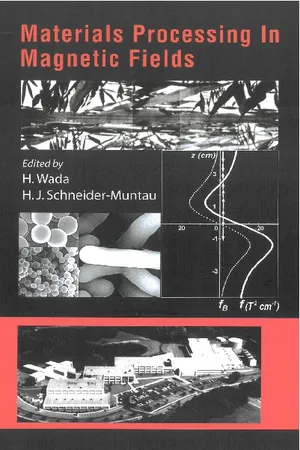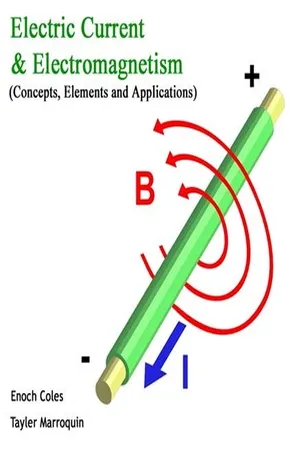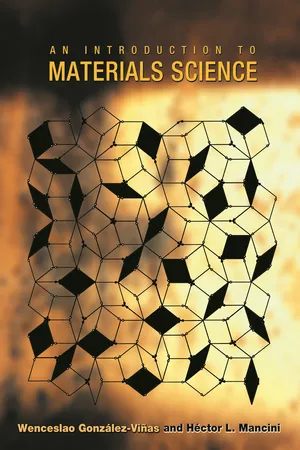Physics
Diamagnetic Levitation
Diamagnetic levitation is a phenomenon in which a diamagnetic material, when placed in a magnetic field, is repelled by the field and levitates. This occurs because the material's atoms create induced magnetic fields that oppose the applied magnetic field, resulting in a repulsive force. Diamagnetic levitation has applications in fields such as materials science, superconductivity, and magnetic levitation technology.
Written by Perlego with AI-assistance
Related key terms
1 of 5
5 Key excerpts on "Diamagnetic Levitation"
- Hans J Schneider-muntau, Hitoshi Wada(Authors)
- 2005(Publication Date)
- World Scientific(Publisher)
In “Diamagnetic Levitation”, the latter two terms on the left-hand side in Equation (1) have been neglected. Under a magnetic field, if the surroundings are paramagnetic enough, it is drawn towards the field center. If the direction of its force is downward, the effective weight of the surroundings increase and the requirement for magnetic levitation is lowered. For example, by using pressurized oxygen gas of 1 x lo6 Pa to surround water, the water can be levitated using an ordinary superconducting magnet with a field of 10 T in which B,dB/dz is about 400 Tz/m [2-41. Stable levitation position in magneto-Archimedes levitation is determined by the ratio of the difference of magnetic susceptibility to the difference of density between- No longer available |Learn more
- (Author)
- 2014(Publication Date)
- Academic Studio(Publisher)
____________________ WORLD TECHNOLOGIES ____________________ Chapter- 12 Diamagnetism and Paramagnetism Diamagnetism Levitating pyrolytic carbon ____________________ WORLD TECHNOLOGIES ____________________ Diamagnetism is the property of an object which causes it to create a magnetic field in opposition to an externally applied magnetic field, thus causing a repulsive effect. Specifically, an external magnetic field alters the orbital velocity of electrons around their nuclei, thus changing the magnetic dipole moment. According to Lenz's law, this opposes the external field. Diamagnets are materials with a magnetic permeability less than μ 0 (a relative permeability less than 1). Consequently, diamagnetism is a form of magnetism that is only exhibited by a substance in the presence of an externally applied magnetic field. It is generally quite a weak effect in most materials, although superconductors exhibit a strong effect. Diamagnetic materials cause lines of magnetic flux to curve away from the material, and superconductors can exclude them completely (except for a very thin layer at the surface). History In 1778 S. J. Bergman was the first individual to observe that bismuth and antimony were repelled by magnetic fields. However, the term diamagnetism was coined by Michael Faraday in September 1845, when he realized that all materials in nature possessed some form of diamagnetic response to an applied magnetic field. Diamagnetic materials Notable diamagnetic materials Material (SI units) Bismuth -16.6 Carbon (diamond) -2.1 Carbon (graphite) -1.6 Copper -1.0 Lead -1.8 ____________________ WORLD TECHNOLOGIES ____________________ Mercury -2.9 Silver -2.6 Water -0.91 Superconductor -10 5 Diamagnetism is a very general phenomenon, because all electrons, including the electrons of an atom, will always make a weak contribution to the material's response. - No longer available |Learn more
- (Author)
- 2014(Publication Date)
- Learning Press(Publisher)
________________________ WORLD TECHNOLOGIES ________________________ Chapter- 2 Types of Magnetism Diamagnetism Levitating pyrolytic carbon Diamagnetism is the property of an object which causes it to create a magnetic field in opposition to an externally applied magnetic field, thus causing a repulsive effect. Specifically, an external magnetic field alters the orbital velocity of electrons around their nuclei, thus changing the magnetic dipole moment. Because of Lenz's law, this opposes ________________________ WORLD TECHNOLOGIES ________________________ the external field. Diamagnets are materials with a magnetic permeability less than μ 0 (a relative permeability less than 1). Consequently, diamagnetism is a form of magnetism that is only exhibited by a substance in the presence of an externally applied magnetic field. It is generally quite a weak effect in most materials, although superconductors exhibit a strong effect. Diamagnetic materials cause lines of magnetic flux to curve away from the material, and superconductors can exclude them completely (except for a very thin layer at the surface). Diamagnetic properties of materials Notable diamagnetic materials Material χ m =K m -1 x 10 -5 Bismuth -16.6 Carbon (diamond) -2.1 Carbon (graphite) -1.6 Copper -1.0 Lead -1.8 Mercury -2.9 Silver -2.6 Water -0.91 Superconductor -10 5 Theory of Diamagnetism ________________________ WORLD TECHNOLOGIES ________________________ Langevin diamagnetism For materials containing atoms with closed shells, the Langevin theory of diamagnetism applies. The classical and quantum theories make equivalent predictions. In the classical theory, a field with intensity B , applied to an electron with charge e and mass m , gives rise to Larmor precession with frequency ω = eB / 2 m . The number of revolutions per unit time is ω / 2π, so the current for an atom with Z electrons is (in SI units) The magnetic moment of a current loop is equal to the current times the area of the loop. - eBook - PDF
- Wenceslao González-Viñas, Héctor L. Mancini(Authors)
- 2015(Publication Date)
- Princeton University Press(Publisher)
Diamagnetism can be understood with the help of the Lenz law. If an atom has the same number of electrons moving in both directions, and if there is an equal number of electrons with spin up and down, then the global permanent magnetic moment is zero. This will happen in molecules with closed shells of electrons. It leads to a zero net angular momentum, as occurs in Bi, Be, Ag, Au, Ge, Cu, Si, MgO, and so forth. If we apply a magnetic field, the internal currents change and the changes are opposite to the variations of the magnetic flux. This creates a net field—and hence we measure a net magnetic moment—opposite to the applied one. As a consequence, the material repels magnets. All these behaviors occur in both directions of movement without canceling themselves, and so magnetic dipoles are induced. If the material is paramagnetic, the field’s first effect is to orient the permanent magnetic dipoles in the field direction. After that, the diamagnetic component appears, but is much smaller than the paramagnetic one (of the order of µ B ). Hence, diamagnetism is relevant only at high temperatures where paramagnetism responds to the disordering effect of thermal vibration. A superconductor, as we see in chapter 7, is a perfect diamagnet. Its magnetic suscepti- bility is, then, χ = −1. 60 CHAPTER 6 To guess the diamagnetic magnetization it is necessary to realize that, when a magnetic field B is applied, the force changes in such a way that it equals the centripetal force evB = dF = 2mvdv/r . Therefore, dv = erB/2m e . The magnetic moment of a moving charge is µ = (1/2)evr ; consequently, the change of magnetic moment will be µ = 1 2 erdv = e 2 r 2 B 4m e ∼ 10 −5 µ B , as we predicted. 6.2 FERROMAGNETISM, FERRIMAGNETISM, AND ANTIFERROMAGNETISM Ferromagnetic materials (Fe, Co, Ni, their alloys, Gd, Dy, etc.) have large positive values of the magnetic susceptibility that depend on the magnetic field. - eBook - PDF
- David J. Griffiths(Author)
- 2017(Publication Date)
- Cambridge University Press(Publisher)
(6.9) M is called the magnetization; it plays a role analogous to the polarization P in electrostatics. In the following section, we will not worry about how the magnetization got there—it could be paramagnetism, diamagnetism, or even ferromagnetism—we shall take M as given, and calculate the field this magneti- zation itself produces. Incidentally, it may have surprised you to learn that materials other than the famous ferromagnetic trio (iron, nickel, and cobalt) are affected by a magnetic field at all. You cannot, of course, pick up a piece of wood or aluminum with a magnet. The reason is that diamagnetism and paramagnetism are extremely weak: It takes a delicate experiment and a powerful magnet to detect them at all. If you were to suspend a piece of paramagnetic material above a solenoid, as in Fig. 6.3, the induced magnetization would be upward, and hence the force downward. By contrast, the magnetization of a diamagnetic object would be downward and the force upward. In general, when a sample is placed in a region of nonuniform field, the paramagnet is attracted into the field, whereas the diamagnet is repelled away. But the actual forces are pitifully weak—in a typical experimental arrangement the force on a comparable sample of iron would be 10 4 or 10 5 times as great. That’s why it was reasonable for us to calculate the field inside a piece of copper wire, say, in Chapter 5, without worrying about the effects of magnetization. 5 4 S. L. O’Dell and R. K. P. Zia, Am. J. Phys. 54, 32, (1986); R. Peierls, Surprises in Theoretical Physics, Section 4.3 (Princeton, N.J.: Princeton University Press, 1979); R. P. Feynman, R. B. Leighton, and M. Sands, The Feynman Lectures on Physics, Vol. 2, Sec. 34–36 (New York: Addison-Wesley, 1966). 5 In 1997 Andre Geim managed to levitate a live frog (diamagnetic) for 30 minutes; he was awarded the 2000 Ig Nobel prize for this achievement, and later (2010) the Nobel prize for research on graphene.
Index pages curate the most relevant extracts from our library of academic textbooks. They’ve been created using an in-house natural language model (NLM), each adding context and meaning to key research topics.




